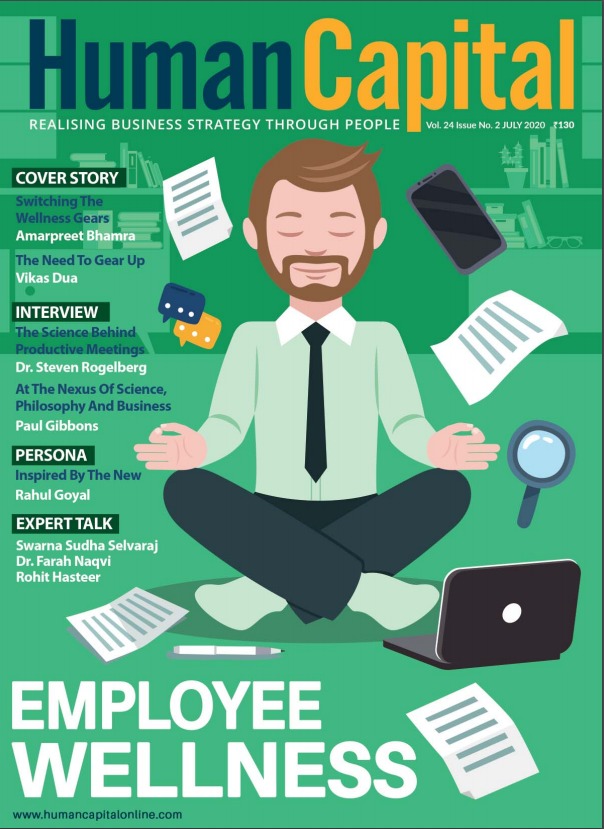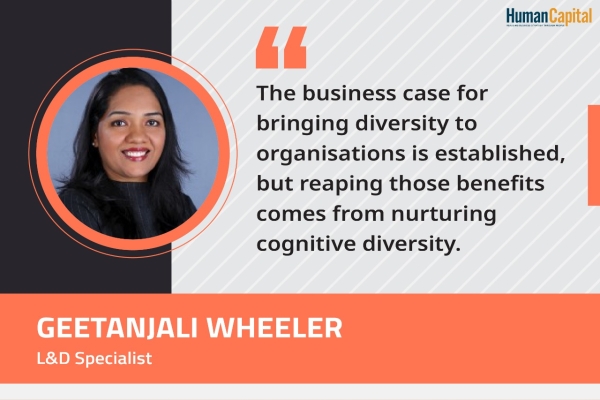The capability of the HR function to respond more quickly and effectively to changing employee expectations, workplace disruptions, and business demands is 'HR Agility'.
In an era of Digital Disruption and Technology Transformation, agility in and by itself could be a competitive advantage. Here is a quick snapshot of the disruption experienced by several Industries, out of which only a few have adopted newer strategies with much required agility, leading to successful and positive outcomes. Evidently, technology has remained as the mainstay during such a transformation process. Clearly, those companies that have either not made technology their ally, nor have executed with agility, have lost out in this disruption.
Examples of all those industries which were disrupted, which lead to the creation of a new concept with the help of of technology and Agility are as mentioned: -
◆The music industry was grappled with Piracy during the Disc era. But services like iTunes and instant radio led to the disruptive nature in the market.
◆ The internet movie streaming companies like Netflix and Amazon Prime threatens the movie theatres and media industry
◆ Cameras were disrupted by smartphones
◆ Media and communications industry were disrupted by web news aggregators, social media platforms, social communication platforms
◆ Educations industry was disrupted by E-books, self-publishing books, blogs and much more
An overview of those Organisations that disrupted the market by adopting new Agile strategies have been mentioned below:-
◆ Netflix and Streaming has disrupted Blockbuster
◆ Amazon led to the bankruptcy of Borders and Barnes and Noble
◆ Digital Cameras led to the bankruptcy of Kodak
◆ PCs and Servers threatened the very existence of IBM’s mainframes business until it focused and executed its powerful Services strategy
◆ Marginalised PC maker Apple evolved to be a successful consumer products company with an outstanding revenue growth and a huge market capitalisation through the launch of iDevices
◆ Wireless, Internet, and Skype disrupted Verizon until it adopted a fibre-optic internet, TV, Phone strategy
◆ Internet, email, and express carriers have disrupted the business of the US Postal Services
A comparison can be drawn between Agile methodology and the Scrum methodology in software development. In Scrum methodology, teams divide their work into goals that must be completed inside of time boxed iterations, called Sprints. And Sprints can take anywhere between a fortnight or a month to be completed. The progress made by the team is closely watched, and revised planning, if any, is normally carried out during daily scrums- a 15-minute stand-up meeting. The Scrum framework is lightweight, iterative, and incremental, and used for managing intricate tasks. It challenges the suppositions held by the traditional, sequential approach to product development, and enables teams to self-organise by encouraging physical co-location or close online collaboration of all team members, as well as daily facetoface communication among all team members and disciplines involved.
A key principle of Scrum is the two-fold recognition that customers will alter their mindsets about their wants and needs (also termed as the requirements volatility), and that there are bound to be unpredictable challenges—and hence a predictive or planned approach is not the best suited.
Scrum is framed on an evidencebased empirical approach—ceding to the fact that the problem is not completely comprehensible or defined upfront, and instead, keeping one’s thoughts cantered over maximising the capabilities of the team to: -
◆ Deliver quickly
◆ Respond to emerging requirements
◆ Adapt to evolving technologies and changes in market conditions
These conditions also apply to the VUCA world in which today’s businesses and organisations are thriving in. Agile methodology helps in slashing cycle-times of the programme/project execution, deriving faster results, failing quickly through smart experimentation so that businesses can focus on potential and a few viable options rather quickly. By way of taking calculated risks, learning fast from intelligent iterations, and focusing on the vital few is the short cut to success with agility.
More and more companies are evaluating newer options for talent acquisition and development by applying technology to various stages of the talent acquisition process, potentially eliminating a few redundant steps and varying a few others to improve the overall efficacy. In today’s job market, hiring the right talent at the right time at the right cost/value is an imperative for success. Currently, candidates have multiple options, and it is critical not only to have a compelling Employee Value Proposition, but also to have the agility in the recruitment process to respond back quickly to facilitate the right decision, both by the company and the candidate.
Empowerment of both the remote and regional teams to act independently and swiftly, by doing away with permissions and approvals from the corporate headquarters would be a key enabler to foster the culture that promotes agility. In doing so, it is essential to ensure that all such teams are aligned with the business vision and strategy. The key is to enhance the pace of execution without compromising the quality of the desired outcomes. And this can be achieved only through agility that is enabled through robust frameworks, process discipline, role clarity, and appropriate infusion of technology.
Onboarding and empowering employees with reliable and relevant information wherever required, with optimal governance will only promote HR agility. Further, it enables efficiency and enriched employee satisfaction to facilitate realisation of the aspired business outcomes. Several companies have leveraged the agility to stem attrition by offering more meaningful career options and growth paths with fulfilling career aspirations to their committed and capable employees by mapping them to new skills and new-jobs. Agile culture has helped organisations to identify emerging technologies and the associated skills needed to convert such opportunities to revenues. Agile organisations have upskilled capable and interested Talent to take on new challenges. Thus, it has assisted them in realising their career ambitions. Organisations that are not agile, not only risk losing their talent, but also get left behind from riding the opportunity wave.
Learning platforms also have to be agile extending the learning content and experiences to the targeted employees anytime and anywhere, on-demand. Workforce plans have to be dynamically designed to cater to the business needs with utmost agility. Such plans may need to be revised on a quarterly basis, if not on a monthly basis. Executing the workforce plans with a clear sense of prioritisation, and having the ability to steer dynamically is important to engage and leverage the emerging opportunities.
It is important to drive a sense of urgency that is deep and allpervasive across businesses, and the organisation plays a key role in fostering and rewarding agility. Agile is a proven way to solve complex business problems in a simple and efficient manner with the available resources.
Are you comfortable working with dispersed colleagues?
Trending
-
SBI General Insurance Launches Digital Health Campaign
-
CredR Rolls Out 'Life Happens' Leave For Its Employees
-
Meesho Announces 30-Week Gender-Neutral Parental Leave Policy
-
Microsoft Unveils Tech Resilience Curriculum To Foster An Inclusive Future
-
60% Indian Professionals Looking For Job Change Due To COVID: Survey
-
SpringPeople And Siemens Collaborate For Digital Transformation Push
-
86% Professionals Believe Hybrid Work Is Essential For Work Life Balance: Report
-
Almost 1 In Every 3 People's Personal Life Affected Due To Work Stress
-
Meesho Rolls Out Reset And Recharge Policy For Employees
-
80% Of Talent Leaders & Academics Say Pandemic Changed Skill Needs For Youth: Report
-
Hero Electric Rolls Out 'Hero Care' Program For Employees
-
Human Capital In Collaboration With ASSOCHAM Hosts Virtual Conference
-
IKEA India, Tata STRIVE Collaborate To Create Employability And Entrepreneurship Opportunities
-
SAP India, Microsoft Launch Tech Skilling Program for Young Women
-
DXC Technology, NASSCOM Collaborate For Employability Skills Program
-
Lenskart To Hire Over 2000 Employees Across India By 2022
-
Mindtree Launches Learn-and-Earn Program
-
Tata AIA Extends 'Raksha Ka Teeka' To Its Employees
-
Swadesh Behera Is The New CPO Of Titan
-
NetConnect Global Plans To Recruit 5000 Tech Professionals In India
-
Hubhopper Plans To Hire 60% Of Indian Podcasters By 2022
-
Corporate India Needs More Women In Leadership Roles: Report
-
Aon to Invest $30 Million and Create 10,000 Apprenticeships by 2030
-
Tech Mahindra Launches ‘Gift a Career’ Initiative for Upskilling of Youth
-
40% Women Prefer Flexible Working Options in Post-COVID World: Survey
-
3 out of 4 companies believe they can effectively hire employees virtually: Report
-
Vodafone , CGI and NASSCOM Foundation launch digital skills platform
-
Odisha: Bank, postal employees to deliver cash for elderly, differently-abled persons
-
Skill India launches AI-based digital platform for "Skilled Workforce"
-
Hiring activity declines 6.73% in first quarter: Survey
-
70% startups impacted by COVID-19 pandemic
-
Bajaj Allianz Life ropes in Santanu Banerjee as CHRO
-
Over 70 Percent MSMEs look at cutting jobs to sustain businesses
-
93 Per Cent employees stressed about returning to office post-lockdown
-
Johnson & Johnson India announces family benefits for same gender partners
-
Indian firms turning friendly towards working mothers
-
Welspun India names Rajendra Mehta as new CHRO
-
Wipro partners with NASSCOM to launch Future Skills platform



Human Capital is niche media organisation for HR and Corporate. Our aim is to create an outstanding user experience for all our clients, readers, employers and employees through inspiring, industry-leading content pieces in the form of case studies, analysis, expert reports, authored articles and blogs. We cover topics such as talent acquisition, learning and development, diversity and inclusion, leadership, compensation, recruitment and many more.
Subscribe Now



.PNG)









































Comment